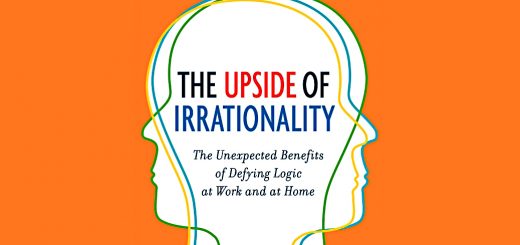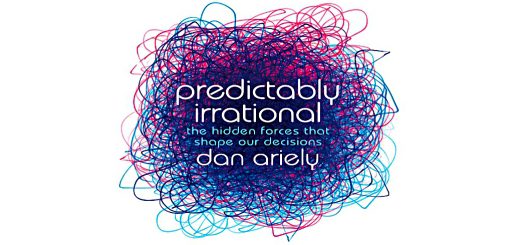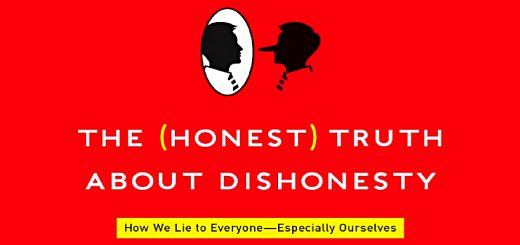The Upside of Irrationality 4 – Dating

Today’s post is our fourth visit to Dan Ariely’s second book – The Upside of Irrationality.
Hot or not
Chapter 7 looks at assortative mating.
- Dan begins by describing his difficulty in dealing with the blow to his teenage self-image caused by his disfiguring burns.
Suddenly I was condemned to three years in a hospital and demoted from what my peers (or at least my mother) might have considered attractive to something else altogether.
If the attractive girls rejected me, would I have to marry someone who also had a disability or deformity? Must I now “settle”?
Since he hadn’t changed inside, Dan found it difficult to accept that he was now less valuable.
I resolved to evade the problem of my declining value in the dating market by avoiding the issue altogether. I was going to ignore my body on every front, [and] I certainly wouldn’t submit to any romantic needs.
But with surging teenage hormones, this was easier said than done.
I started thinking about what my romantic future might hold. My personal concerns soon developed into a more generalized interest in the romantic dance.
Assortative mating is the phenomenon that attractive people tend to date attractive people.
Note that attractive can mean rich/funny/powerful/upper-class as well as beautiful/tall/thin/strong/young/not-bald.
- Though beauty has generally been the main factor, particularly for women.
The current generation of young adults seems to be having a good go at overthrowing this tyranny, however.
Dan mentions the “sour grapes” fable: a fox who can’t quite reach some grapes concludes that they were sour in any case.
We tend to scorn that which we cannot have.
I’ve certainly noticed this in investment, with many private investors wedded to approaches from earlier eras that they can understand.
- New innovations can’t possibly work better, which is handy, as they would be unable to implement them in any case.
In the beauty game, less attractive people often find fault with some small imperfection in a more attractive (and usually famous) person.
Dan wanted to know whether less-attractive people are aware that they are settling.
Do women who attract only short, bald men start liking those attributes in a mate? Or would these women still rather date tall men with lots of hair, but, realizing that this is not possible, they change their focus to nonphysical attributes such as kindness and sense of humor?
The other possibility is that people don’t adapt (settle) at all.
- As Dan says, plenty of men over 50 think that women in their 20s would date them.
Dan used data from the Hot or Not website, where photos are rated from 1 to 10.
If people who are aesthetically challenged have not adapted, their view of the attractiveness of others would be the same as those of highly attractive people. If adaptation had taken place, a person who is a 2 could see a 9 as a 6 and a 4 as a 7.
The first point was that people agreed on who was hot.
- So sour grapes were out.
To decide between the other two options, they looked at the “Meet Me” feature on the site (similar to swipe right on Tinder).
You can click the Meet Me button above the woman’s picture. She will then receive a notification saying that you are interested in meeting, accompanied by a bit of information about you.
The key is whether unattractive people will respond to people out of their league (because they don’t realise they are out of their league).
- I think this logic is unconvincing since it would always be in my (rational) interest to respond to very attractive women, even if I thought they were more attractive than me.
Luckily for Dan, the data says that in general, the uglies don’t chase the hotties.
To prove that people learn to appreciate “compensatory attractions”, Dan turned to speed dating (of which Dan is a fan).
Speed dating is safer and less potentially humiliating than clubbing, blind dating, being set up by your friends, and other less structured dating arrangements.
You get a few minutes together, then each tick a box to say whether you would be prepared to meet again.
- Dan’s contestants had to fill in a survey first.
We asked them to rate the importance of different criteria – physical attractiveness, intelligence, sense of humor, kindness, confidence, and extroversion – when considering a potential date.
They also had to rate each date (the person, not the experience) immediately after the meeting.
Those who were more attractive cared more about attractiveness, while the less attractive people cared more about other characteristics (intelligence, sense of humor, and kindness).
The aesthetically challenged people were much more interested in going on another date with those they thought had a sense of humor or some other nonphysical characteristic, while the attractive people were much more likely to want to go on a date with someone they evaluated as good-looking.
So people adapt, and the less attractive learn to look for other qualities.
His and hers
Men were 240 percent more likely to send Meet Me invitations to potential females than vice versa.
Men care more about the hotness of women, which also relates to the finding that men are less concerned with their own level of attractiveness. They were more likely to aim for women who were “out of their league”.
What a surprise.
Market failure
Chapter 8 looks at what can go wrong in the dating market.
- Dan sees the market for single people as “one of the most egregious market failures in Western society”.
I think that he’s wrong here.
- My idea of a market failure is either a monopoly (prices too high because of no competition) or an externality (pollution or global warming – prices too low because some cost is ignored).
There’s never been an effective market in dating because the market is so asymmetric.
Historically women wanted protection and (financial) support, and men wanted sex (and perhaps children and/or later companionship).
- Men can also have sex with as many women as will let them, but women can only be protected and supported (and supplied with children) by one man (at a time).
So sexual strategies are wildly different, and most children in history come from a very few men (20% on average).
- In recent decades we have compounded this problem by making it easier for women to support themselves, removing their major motivation to couple up.
Dan commented earlier on men’s willingness to date up (“out of their league”), but it’s their willingness to date down that keeps the world spinning.
- Women all want to date the best of men, but luckily men aren’t so picky.
There’s a similar story from inter-racial dating.
- Most men will date any race, but most women prefer their own race.
The two exceptions are that a lot of women will date a successful white man, and Asian women, in particular, seem more open-minded.
Back to Dan, who wants to talk about online dating (a misleading term, since pre-Covid, the dates happened in the real world).
When he heard about the process, Dan was not enthusiastic:
How could all the multiple-choice questions, checklists, and criteria accurately represent their human subjects? Dating sites treat their users as searchable goods, as digital cameras that can be fully described by a few attributes. But they [are] closer to “experience goods.”
So like a restaurant meal or art.
- Dan’s first investigation was a survey of dating experiences:
People spent an average of 5.2 hours per week searching profiles and 6.7 hours per week e-mailing potential partners, [but] a mere 1.8 hours a week actually meeting any prospective partners in the real world.
Since people rate offline dating as better than online (and online as worse than watching a movie alone), this 6:1 ratio of online to offline (“meatspace”) time is what Dan calls the market failure.
Again, I think Dan is wrong.
- His calculation assumes that dating is an end and not a means.
I’ve been with my partner for more than 20 years now, during which period we have conservatively spent 100,000 hours together.
- We didn’t meet online, but if we had, there is no amount of time spent online in order to meet her which wouldn’t have been the greatest bargain of all time.
Dan’s next survey asked online daters what attributes and qualities they were looking for.
Experienced online daters were about three times as interested in experiential than in searchable attributes, and this tendency was even stronger for people who said they sought long-term, rather than short-term, relationships.
Which suggests that the online matching method is not efficient.
The standard practice of dating is about experiencing something together: watching a movie, enjoying a meal, meeting at a dinner party or a museum. We can see how that person interacts with the world around us.
So Dan set up an online chat environment of rooms filled with objects to talk about (images of people, shoes, movie clips, and abstract art).
Then he arranged a speed dating event where people would meet (amongst others) one person they had met online, and one that they had met in the chat room.
- Participants were asked if they liked their speed dates, and also how similar, exciting and comfortable they were.
Both men and women liked their speed-dating partner more if they’d first met during the virtual date. In fact, they were about twice as likely to be interested in a real date. In our virtual world, people made the same types of judgments about experiences and people that we are used to making in our daily lives.
Which made the chat rooms more useful to potential partners.
When designers design physical products, they take people’s physical limitations into account. They try to understand what human beings can and cannot do. But when people design intangibles such as health insurance, savings plans, retirement plans, and even online dating sites, they somehow forget about people’s built-in limitations.
This comes right back to our fundamental irrationality – our inability to behave as Mr Spock would do.
As investors there are perhaps two lessons:
- Don’t assume that online systems have been built with you in mind, or are even designed to help you reach your goals, and
- Build your own systems, to protect yourself from your limitations.
Retirement calculators
Dan uses retirement calculators as a similar example of a failure in product design.
After we enter data about our expenses, the calculator tells us that we will need, say, $3.2 million in our retirement account. Unfortunately, we don’t really know what kind of lifestyle we might have with that amount or what we can expect if we have only $2.7 million or $1.4 million.
Nor does the calculator explain the journey through decumulation in the same simplistic way that it summarises the accumulation of wealth.
The number doesn’t translate into anything that we can visualize or comprehend, so it doesn’t motivate us to try harder to save more.
Annuities are another market that doesn’t work well, since potential buyers can’t work out what they are worth, and salesmen are not incentivised to help them. (( In recent years there has been the extra problem that interest rates are so low as to make annuities prohibitively expensive ))
Conclusions
That’s it for today.
- We’re around 80% of the way through the book, so there will be one more article in this series (along with a summary).
I’m still looking for the upside mentioned in Dan’s title.
- Until next time.

















